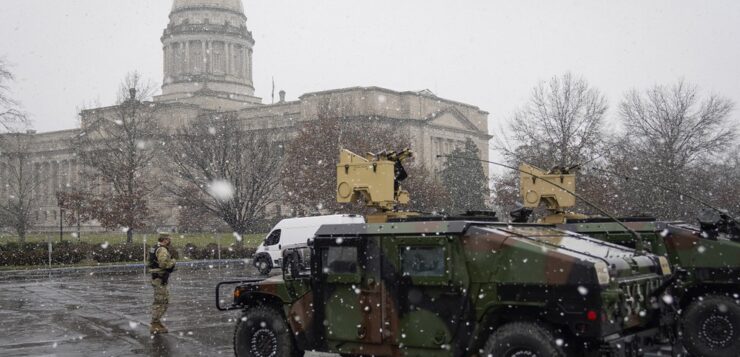By DAVID A. LIEB and ADAM GELLER


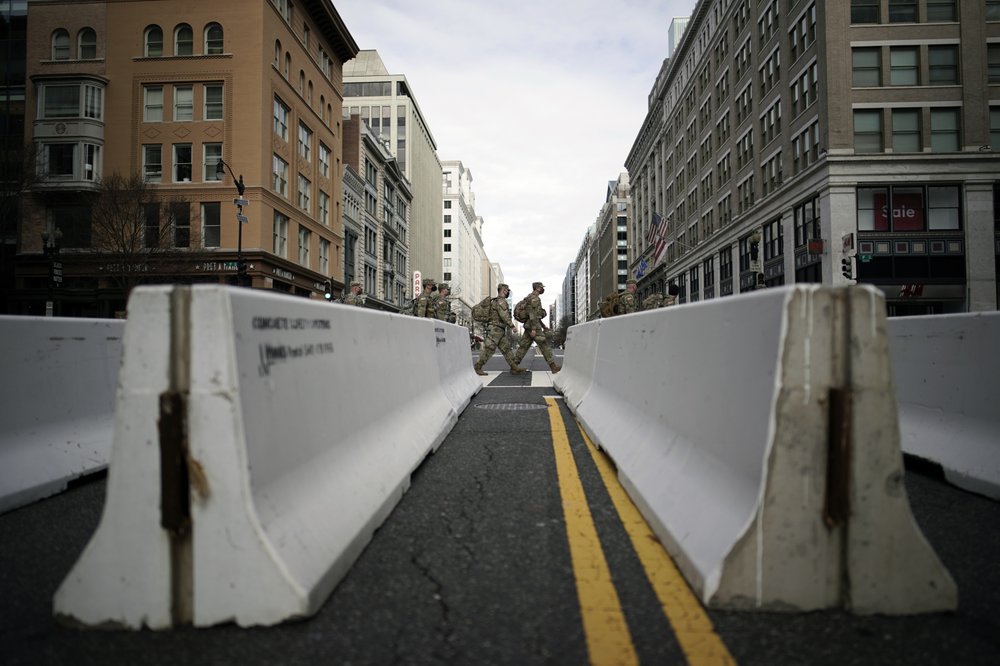
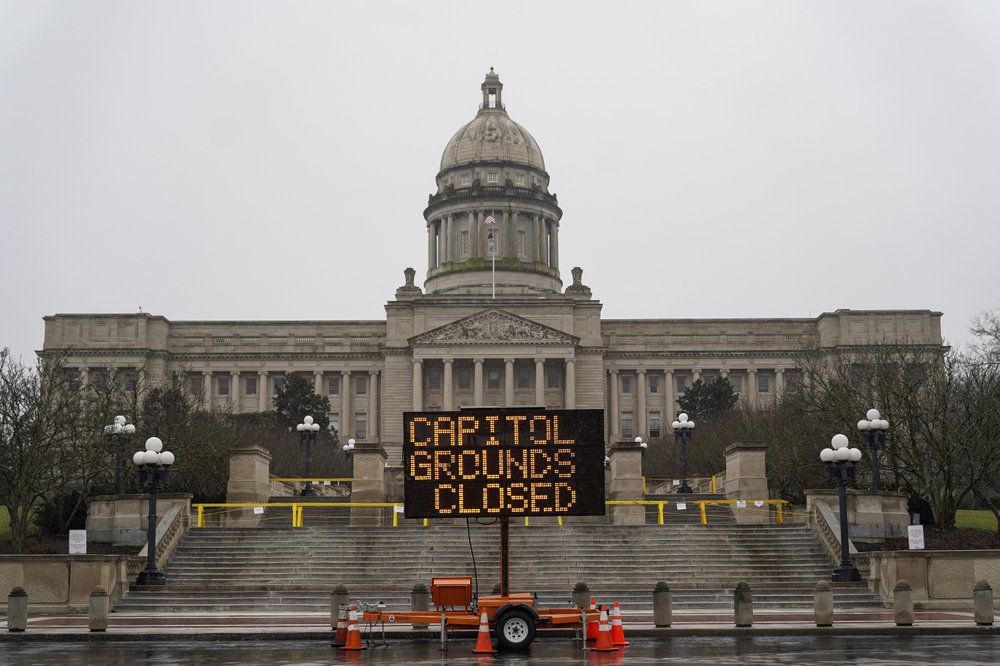

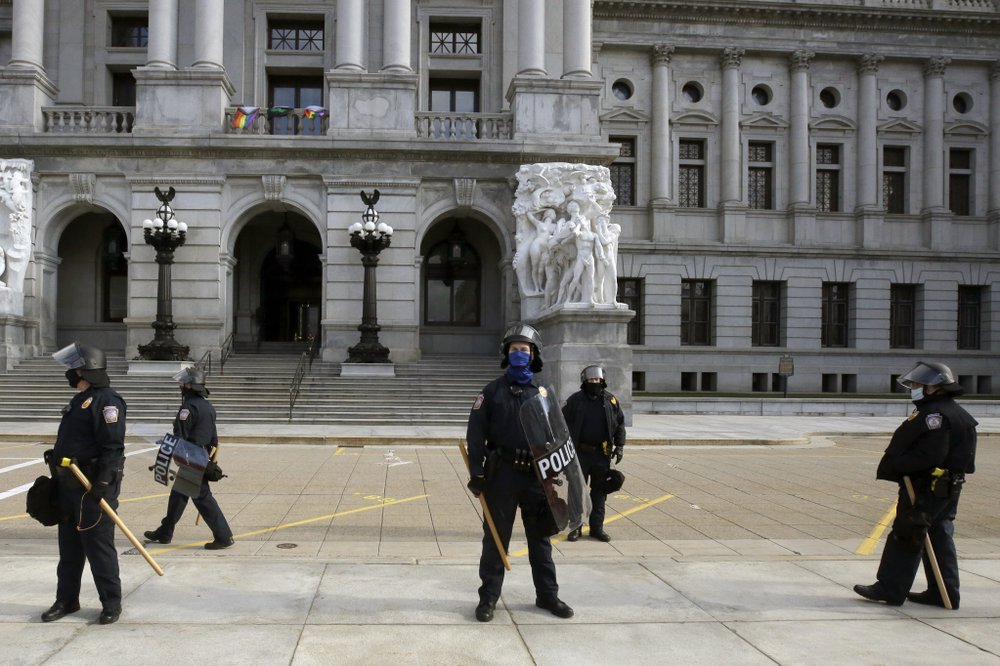
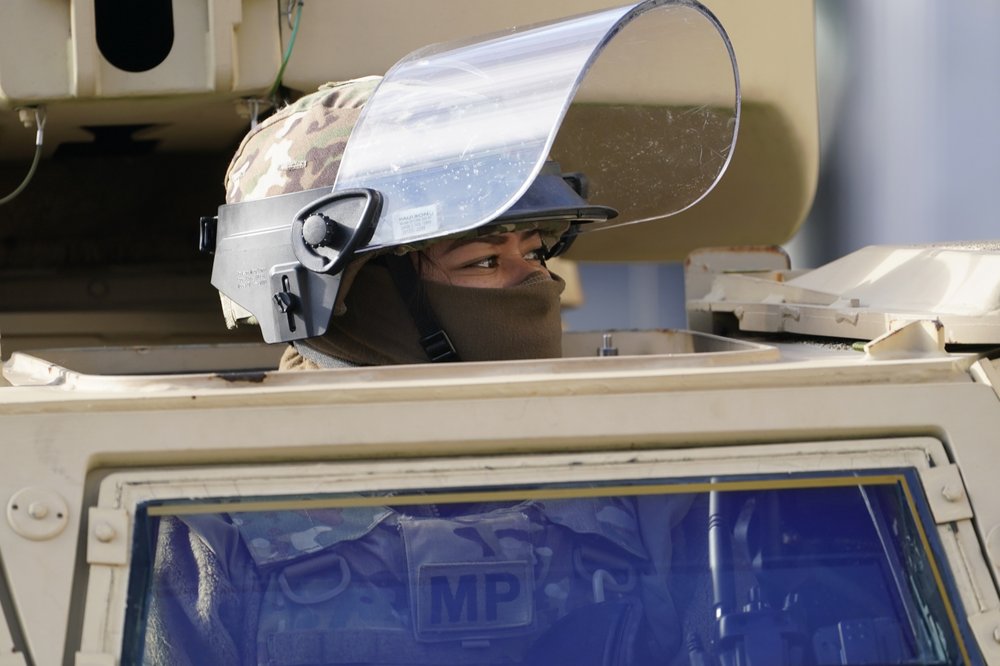







The threat of extremist groups demonstrating at statehouses across the country prompted some governors to roll out a show of force and ramp up security Sunday, less than two weeks after a mob overran the nation’s Capitol.
Fencing, boarded-up windows and extra police and National Guard troops transformed some statehouses ahead of expected protests leading up to President-elect Joe Biden’s inauguration on Wednesday. But the grounds around capitols were generally empty and quiet early Sunday.
The stepped-up security measures were intended to safeguard seats of government from the type of violence that occurred at the U.S. Capitol on Jan. 6, when a supporters of President Donald Trump swarmed the building while Congress was certifying the Electoral College vote.
The FBI has warned of the potential for armed protests at the nation’s Capitol and all 50 state capitol buildings beginning this weekend. Some social media messages had targeted Sunday for demonstrations, though it remained unclear how many people might show up.
On Sunday morning, state police and National Guard troops stood sentry around a number of statehouses, including those in Michigan, Ohio and Pennsylvania. One counter-protester came early to greet any demonstrators at the Pennsylvania Capitol, saying he had heard about the possibility of a meet-up of a far-right militant group. But no one else was there.
“I’m fundamentally against the potential protesters coming here to delegitimize the election, and I don’t want to be passive in expressing my disapproval of them coming into this city,” Stephen Rzonca said.
In Columbus, Ohio, nearly every business around the downtown capital square was boarded up. In Lansing, Michigan, police with dogs patrolled on foot, and a helicopter hovered overhead. In Atlanta, armored vehicles were stationed on Capitol grounds.
Wisconsin National Guard troops armed with rifles, shields and body armor arrived near the state Capitol on Sunday morning. A man who drove a vehicle up the steps of the Capitol building was arrested overnight for driving while intoxicated.
Security in Washington, D.C., has also intensified ahead of the inauguration. Tall fencing surrounds the U.S. Capitol, the National Mall is closed to the general public, and the District of Columbia’s mayor asked people not to visit. Some 25,000 National Guard troops from around the country were due in the city by early in the week.
On Sunday, National Guard troops who have already arrived were stationed outside the Capitol with officers from the Customs and Border Protection as well as other federal police. The surrounding streets were eerily quiet as a lone protester walked the sidewalk wearing a sign the said: “Renounce Trump!”
In the states, some authorities said they had no specific indication that demonstrations would occur, much less turn violent. Yet many state officials vowed to be prepared, just in case. They said they did not want a repeat of the mob’s assault on the Capitol, which left a Capitol Police officer and four others dead. Dozens of other officers were injured.
More than a third of governors had called out the National Guard to help protect their state capitols and aid local law enforcement officers. Several governors issued states of emergency, and others closed their capitols to the public until after Biden’s inauguration day.
Some state legislatures also canceled sessions or pared back their work for the coming week, citing security precautions. Texas, where police in riot gear guarded the Capitol on Sunday, was among the states closing their capitol grounds through the inauguration.
“The Texas Department of Public Safety is aware of armed protests planned at the Texas State Capitol this week and violent extremists who may seek to exploit constitutionally protected events to conduct criminal acts,” said Steve McCraw, the agency’s director.
More than 100 troopers in riot gear were stationed outside the Capitol in Austin earlier this week as lawmakers began a new legislative session. In Richmond, Virginia police braced for possible demonstrations early Sunday, with security fencing erected around the Statehouse.
Even before the violence at the U.S. Capitol, some statehouses had been the target of vandals and angry protesters during the past year.
Last spring, armed protesters entered the Michigan Capitol to object to coronavirus-related lockdowns and were confronted by police. People angered over the death of George Floyd, who died after a Minneapolis police officer pressed a knee into his neck for several minutes, vandalized capitols in several states, including Colorado, Ohio, Texas and Wisconsin.
And just last month, crowds in Oregon forced their way into the state Capitol in Salem to protest its closure to the public during a special legislative session on coronavirus measures.
Anticipating the potential for violence in the coming week, the building’s first floor windows were boarded up and the National Guard has been deployed. The Legislature was scheduled to begin its 2021 session on Tuesday, but much of its initial work has been delayed for at least two days because of warnings about potential violence.
’The state Capitol has become a fortress,” said Oregon Senate President Peter Courtney, a Democrat. “I never thought I’d see that; it breaks my heart.”
___
Associated Press writers Scott Bauer in Madison, Wisconsin; Sara Cline in Salem, Oregon; Ben Fox in Washington; Mike Householder in Lansing, Michigan; Marc Levy in Harrisburg, Pennsylvania; Angie Wang in Atlanta; Paul Weber in Austin, Texas; and Andrew Welsh-Huggins in Columbus, Ohio, contributed to this report.

